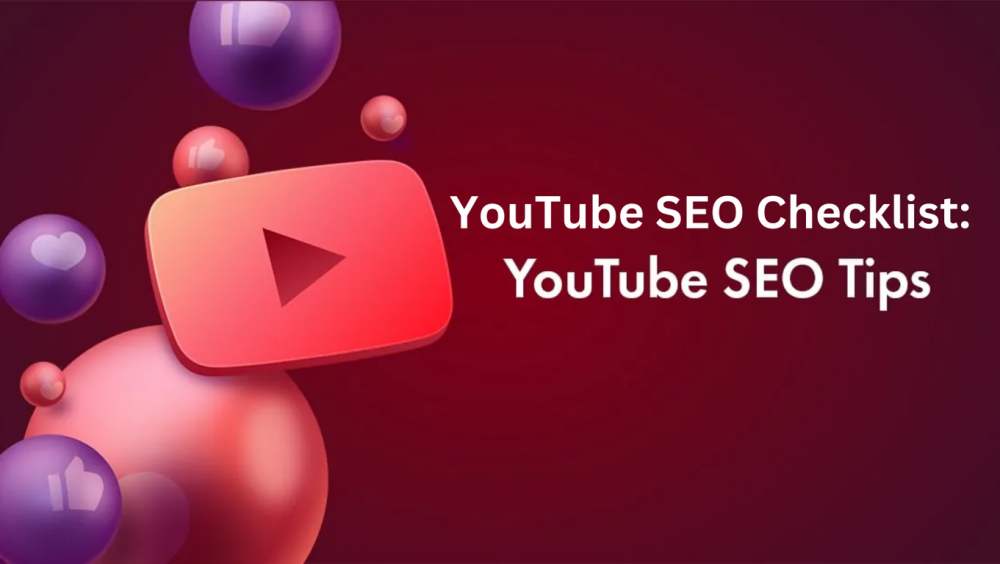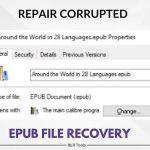Discoverability Creating great videos is only the tip of the iceberg when it comes to success on YouTube. With more than 2 billion users coming in every month, there is little room for most to stand out from the crowd. The key to better visibility—and subsequently more views—lies in how best to optimize your content to make it easier for them to discover. In this guide, we’ll show you the ultimate YouTube SEO checklist that guides your video toward a higher ranking and towards reaching the right audience. Perfect for new and experienced creators, here are the tips and tricks that will help your videos get some organic traction.
Why is YouTube SEO a backbone of video discoverability?
How many hours have you spent on a video that would get lost in the YouTube shuffle? YouTube SEO is not a technical process; it is the act of bringing your videos to the people who are actively seeking what you are producing. A good SEO strategy makes it easier for YouTube’s algorithm to understand your content and enables it to appear in search results and recommendations.
Properly executed YouTube SEO bridges that gap between content creation and audience discovery. From titles to descriptions and tags, optimization of these essentials is the key to pushing organic growth and maximizing the reach of each video you publish.
Crafting Titles That Get Attention
Your video title is the first shot you get at hooking in your viewers. Consider it like a headline of an article: descriptive, but intriguing. An optimal title includes the most important keyword ideally put at the very beginning without sounding too robotic.
For instance, the following title is interesting, specific, and also strategically includes keywords: “How to Cook a Perfect Steak: 5 Chef Secrets for Beginners.” Your description needs to clearly indicate what the viewer will learn while also building enough interest to make them click. Use variations and refine over time to learn what works well with your audience as well.
Descriptions: Where Details Make a Difference
Think of your video description like a mini blog post in which you can give the viewer and YouTube’s algorithm a deeper understanding of your content. Briefly summarize your video. Your main keyword should be included in that first sentence. Then add more detail, such as key points covered, links to resources, or calls to action, such as subscribing or clicking on a related video.
Descriptions of about 200 words are good for providing enough context to grab the audience’s attention and ranking well in search with minimal length. Suppose the video is a video on fitness tips; some examples could be a start such as, “Want to build some strength and feel your best? In this video, we discuss five easy fitness tips for beginners, from warming up to putting a routine together that works.” Tags and Keywords: How YouTube Helps Filter Your Content
The tags make Youtube tag your video and attach it to relevant content. Start with the main keyword; then add variations, then broader categories that could encompass the niche your content falls under. For example, your video “Yoga for Beginners” could have such as “yoga”, “beginner yoga routine”, “relaxing yoga exercises”, and “yoga for stress relief”.
It can provide you with ideas about the current search trends, and tags can be used to get more visibility for the YouTube suggested video algorithm, thereby increasing your chances of getting a view from interested viewers.
Image Creation of Attractive Thumbnails
The first thing that greets the eyes of any viewer is your thumb, and that leads to a huge effect on click-through rates (CTR). YouTube likes videos with high CTR, so an interesting thumbnail can not only give your video a ranking boost but also stir up a wider discussion. Use bright contrasting colors and large, readable text and definitely add your face or other expressive visuals.
For example, you are making a video of baking. You could put the close-up shot of a well-decorated cake with a warm and inviting background instead of the wide scene in the thumbnail. It may also grab more attention. Ensure that you have a unified look for all your thumbnails on your channel so that your material also looks polished, professional, and builds your brand.
Engagement Matters: Increase your Likes, Comments, and Shares
Other factors that affect the probability of your video ranking are user engagement indicators such as likes, comments, and shares. To increase comments, you can always ask open-ended questions to engage your viewers in the conversation. For example, if you are sharing a recipe, ask viewers, “What’s your favorite twist on this recipe?” or “What would you like me to cook next?
These interactions let YouTube know that your content is worth something so will have a higher chance of being recommended for others use and viewing. The more interaction the video receives, then its SEO strength improves along with that means it will be more discoverable.
Benefits of Closed Captions and Transcripts for Accessibility and SEO
Captions and transcripts: win access and SEO. While YouTube automatically captions some of its videos, those are not 100% accurate; you should upload your transcript or edit the automatic captions manually. Adding a layer of text will facilitate YouTube’s indexing and make your video accessible to viewers who might not use sound while watching.
Of course, you can also put in transcripts within the description section, or take advantage of YouTube’s caption tool as a way to enhance your video’s search engine optimization without choking your viewers with too much text.
End Screens and Cards: Keep Viewers Watching
End screens and cards force viewers to watch more of your videos. Thus, they help to increase the watch time as a whole. Cards can be added anywhere in the video and send viewers to other related videos, playlists, or even to external sites. End screens are triggered at the end of the video for 20 seconds, reminding viewers to subscribe, watch the next video, or follow you on social media.
As an example, let’s say your video is on travel tips. So you’ve got a card here that takes them to a similar video called “Top Destinations for 2024.” The more people spend their time on your channel, the better your YouTube SEO, and the more your channel is a destination.
Consistent Publishing for Long-Term Growth
Consistency implies reliability not only to YouTube but also to your viewers. When you upload regularly, your viewers will learn that they have something to look forward to, thereby providing for the growth of your channel over time. Schedule an achievable rate—be it once a week or twice a month—and stick to that.
Regular uploads will also help you gain insight into video length, topics, and styles over time. Tracking performance and adaptability based on what works for your best fine-tunes your content strategy and gets the most from your SEO.
For further Inquires Contact Us
FAQs:
Why is there a need for YouTube video SEO?
YouTube SEO means that the more people view your YouTube videos by working on titles, tags, and descriptions to match what people are looking for.
How do I get keywords for my YouTube video?
Use TubeBuddy, VidIQ, or YouTube AutoCompletions/Search Suggestions as an intelligent guess about popular keywords your content needs.
Do YouTube tags help with SEO?
Tags tell YouTube what your content is about. This can lead to a knock-on effect improving the rank of your video in search and recommendations.
What makes a good YouTube thumbnail?
A thumbnail is attractive and attention-grabbing with bright colors, readable text, and an image that reflects the video’s content so it attracts viewers to click.
How often should I post on YouTube for growth?
Consistency is the key; keep posting at a regular interval, be it weekly or biweekly, to make your audience loyal and boost the growth of your channel over time.



